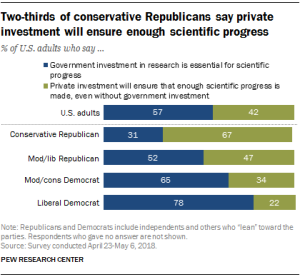

Migration, racial or ethnic self-identity, and marriage were among the many topics explored at the Population Association of America’s annual meeting in Denver last month. The meeting, the largest demography conference in the United States, provided a forum for researchers to present their work at more than 250 sessions.
What follows is a brief synopsis of some of the conference’s research highlights. As is true of many conferences, the work presented often is preliminary and may be revised later. The full conference program can be found here.
U.S.-born children in Mexico
People born in Mexico are the largest group of U.S. immigrants, and they are part of the largest south-to-north flow in the world. But the main direction of migration has reversed over the past decade: Following the Great Recession, more Mexicans left the U.S. than arrived, sometimes accompanied by their U.S.-born children. In analysis presented at the PAA conference, researchers from three institutions used Mexican census and survey data to provide a demographic portrait of the estimated half a million U.S.-born children who have moved to Mexico between 2000 and 2015.
Their analysis found that migration of these young U.S. citizens into Mexico surged from 2000 to 2010 and then slowed, which roughly coincided with the end of the U.S. recession. In 2010, most U.S.-born children had arrived in Mexico over the previous five years. In 2015, most had arrived more than five years earlier. Though they live predominantly in northern Mexico, especially in Baja California and Chihuahua, U.S.-born children reside throughout the country.
A growing share of these U.S.-born children are now school-age, according to the researchers. News stories suggest some are in “educational limbo” and having trouble getting an education, sometimes because they don’t speak Spanish. The share of U.S.-born children who are ages 4 and younger declined throughout Mexico after 2010, but less so in the northern region, which the authors say could be because of a continued influx of U.S.-born infants.
The authors include Claudia Masferrer of el Colegio de Mexico, Nicole Denier of Colby College and Erin R. Hamilton of the University of California, Davis.
How do people choose their racial or ethnic identities?
There is increasing research interest in how people choose racial or ethnic categories to describe themselves. One PAA presentation examined this choice for self-identified Filipino Americans, whose numbers in the U.S. grew from about 2.4 million in 2000 to nearly 4 million in 2015.
Many Filipinos have Spanish surnames, reflecting the Philippines’ Spanish colonial history. Even so, only about 8% of Filipinos living in the U.S. check the Hispanic box on their census forms. Those who do describe themselves as both Filipino and Hispanic are more likely to be 50 and older, born in the U.S. (that is, not immigrants) and living in Hispanic neighborhoods, among other factors, according to Florida State University researchers Elwood Carlson, Gloria Lessan and Portia Campos, who analyzed data from the Census Bureau’s American Community Survey.
Why would some Filipino Americans be more likely than others to describe themselves as Hispanic? The authors say more research is needed to answer that question, but they suggest that many older Filipinos may identify as Hispanic because they lived through an era of historic segregation that forced them into closer contact with Hispanic communities. And those living in Hispanic neighborhoods are more likely to identify with their neighbors, the researchers said.
Immigrants may be less likely to call themselves Hispanic, according to the authors, because “Hispanic pan-ethnic identity is a synthetic political, social and economic invention of U.S. society unfamiliar to persons born in other countries.” As Pew Research Center surveys have found, U.S. Latinos generally prefer to identify themselves by their countries of origin, rather than as Hispanic.
Why would some Filipino-Americans be more likely than others to describe themselves as Hispanic?
In the census and other surveys, being Hispanic is a matter of self-identification: You are who you say you are. The federal Office of Management and Budget, which sets standards for how the government collects race and ethnicity information, states that Hispanics are people “who trace their origin or descent to Mexico, Puerto Rico, Cuba, Central and South America, and other Spanish cultures.” The Philippines is not specifically included in the Hispanic category, which is considered an ethnicity not a race. On a separate census race question, “Filipino” is offered as an Asian option.
Who identifies as multiracial?
Research in the U.S., including a 2015 Pew Research Center survey, has found that many people with parents or grandparents from more than one racial group do not identify themselves as multiracial. (One famous case is Barack Obama, the son of a white woman and black man, who said he checked “black” on his census form.)
This phenomenon also exists in the United Kingdom, where research has found that a substantial share (up to 40%) of people with parents of different races do not identify themselves as multiracial (or “mixed,” as it is known there). A research paper by a London School of Economics graduate student, Tze Ming Mok, examined who does and does not.
The paper analyzed data for more than 900 adults (ages 16 and older) who had one white parent and one parent who was black, Asian or another racial minority. (Her presentation slides included a photo of Prince Harry and Meghan Markle, his U.S.-born bride whose parents are white and black.) People who identified as mixed, she found, were younger than those who identified with one race, and had more education and income. Those who identified as white tended to live in whiter neighborhoods, while those who identified as single-race minority were least likely to be in heavily white areas, although those differences disappeared when other characteristics were taken into account.
The best predictor of the racial self-identity of someone with multiracial ancestry, Mok concluded, was the race of that person’s minority parent. People with a black parent were most likely to identify as mixed race, reflecting what she described as the popular conception of that group in the UK. People with an Asian parent are most likely to choose Asian than either white or mixed. Those with parents from another minority group are most likely to identify themselves as white. Mok’s data came from the UK Household Longitudinal Study.
Some work by scholars in the U.S. suggests that for people of multiracial backgrounds, choosing to be biracial rather than black, or white rather than black, is associated with higher status. But in Mok’s sample, even after accounting for other factors, people who identified as mixed race were better educated and had higher incomes than those who chose white. Her findings, she said, may support the theory that for some people, being multiracial “is a marker of middle-class individualism” and privilege.
Marriage and money
Economic security plays a role in people’s readiness to wed. A majority of Americans who have never married but may want to say one reason for not marrying is that they are not financially stable. This is especially true for young adults. And while in the past, marriage rates were linked to how well men were doing economically, a Census Bureau working paper suggests that for today’s young adults, economic characteristics of both women and men might be related to marriage rates.
Researcher Benjamin Gurrentz used American Community Survey data to analyze four county-level metrics among adults ages 18 to 34: Labor force participation, wages, poverty and housing. Some indicators mattered more than others. Full-time work, median wages, women’s poverty, housing costs, owning a home and living in a parent’s home all were significantly linked with higher or lower marriage rates among young adults to some degree.
For today’s young adults, economic characteristics of both women and men might be related to marriage rates.
Though past studies have found that men’s financial stability is more important than women’s to marriage rates, “the present study found little evidence to suggest that men’s socioeconomic characteristics produced significant associations more often than those of women.” The paper tested the links to marriage rates for 10 scenarios related to economic characteristics, separately by gender. Women’s characteristics produced statistically significant results in six models, men’s in five.
Another paper by three Duke University researchers, which looked at marriage and cohabitation among low-income parents, had somewhat similar findings about economic security, but not about gender and marriage. The researchers used a dataset of 4,444 unmarried, low-income couples in eight cities who had newborns or were expecting babies and had enrolled in the federal Building Strong Families study, which tested the impact of relationship-skills training. Most of these couples in their mid-20s were living together, and believed they would later marry.
When the couples were surveyed 15 months and/or 36 months after participating in an initial survey, most had broken up or were cohabiting, but not married. Those who did marry were more likely to have reached some threshold of economic security, measured by having at least four of seven achievements that included being employed, having health insurance and avoiding public assistance. Three years into the study, 17% of couples who met that threshold were married, modestly higher than the 13% of couples who had achieved less than that.
The likelihood of marriage was highest for couples in which both partners met the bar, the researchers reported. At three years, the likelihood of marriage also rose in couples where only the father had achieved some economic security, but less so when only the mother had. (The researchers – Rebecca Lehrman, Christina M. Gibson-Davis and Anna Gassman-Pines – noted that their analysis accounted for whether couples received relationship-building training, even though that training was found not to have an impact on whether couples married.)
